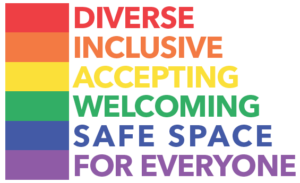We all have things that make us feel anxious like giving a presentation or having a job interview but it may seem like in our daily life more and more we encounter extreme, awful, or scary things. It makes it easier for our minds to come up with negative, worst case scenarios that end up turning up the volume on anxiety.
What is anxiety?
It is a normal feeling we experience when we predict that something bad could happen.
Living in today’s constantly connected world, the possibility of something scary, awful, or threatening can pop in our head by just turning on the news or driving our kids to school.
Try these 3 things to turn down anxious feelings so you can continue doing the things you want to do.
1 – Relaxed body is tied to relaxed mind. Even seeing or hearing about awful, scary things – perhaps the news on the latest epidemic – can cause the “fight or flight” response to turn on. Our body makes physical changes like increased heart rate, sweating or tense muscles so it can be prepared to fight or run away from the danger.
When we do activities to purposely deactivate our fight or flight response, or relax our body, our mind plays follows the leader.
Try this, notice:
- 5 things you can see – notice shapes, colors, brightness, shadows.
- 4 things you can hear – notice pitches, volumes, tone.
- 3 things you can feel/touch – notice textures.
- 2 things you can smell – notice hints of sweetness, bitterness, pungent, etc.
- 1 thing you can taste – notice hits of spicy, sweet, sour, etc.
Notice and observe things you have never paid attention to before. Maybe say what you observe out loud, or just to yourself. You can mix it up anyway you like, perhaps you are at a restaurant and you can taste 5 things, or smell 5 things. It is just about using your senses in a purposeful, intentional way. By getting out of your head and engaging your body in a slow, mindful activity it is pretty much impossible to focus on the image that turned anxiety up in the first place.
2 – Remind yourself: What you feel is not always true. I feel like I am going crazy! Perhaps you’ve said something like this to yourself and if we are going to turn down the volume on anxiety, we need to challenge how our feelings “prove” that something is going to happen.
A quick peek at your latest social media feed and you see a story about a family who had a burglar break in their house and murder three people. Quickly shock, fear, horror, or sadness fills your experience. It is valid that you may feel that way but the mind, in its amazing abilities, will use those emotions as proof to make a conclusion that may not be true.
I feel scared so that means something bad is going to happen!
Try this:
- Take a few deep breaths – deep enough to see your stomach area expand and contract.
- Acknowledge you are feeling scared – is it a knot in your stomach? Is it racing thoughts?.
- Take a few more deep breaths.
- Focus on the facts.
Facts themselves don’t increase anxiety, the perception that it could be a threat does. By placing time and breathing between what you saw/heard and making any decisions, you allow the intensity of the anxiety to subside like the tide on a beach. You will have a better chance to be calm and focus on the facts not the “coulds.”
3 – Accepting the unpredictable but be prepared. You can’t really know if someone will break in to your house, or use a gun in a violent way, or if you will catch the new virus going around but perhaps we can be prepared the best we know how.
If you have noticed that the news, your social media, or stories you heard from friends have increased your anxiety, you went through 1 and 2 above and you still feel uneasy, then maybe prepared action is the next step.
We have active shooter drills, we get trained in CPR, and we wear our seat belt with the mindset of accepting that we will never know IF something bad could happen and just being prepared anyway.
Have a plan:
- Create a plan for what you and your family would do if [insert awful situation] happened.
- Talk with your workplace to double check emergency plans.
- Have a chat with your children’s school to understand what plans they have.
- Talk with your doctor about your health concerns.
- Join a neighborhood watch group.
- Take a self-defense class.
By moving your focus from “What if’s” to accepting that life is unpredictable and doing your best to be prepared will increase your confidence and readiness just like when we plan and study for what we will say in a presentation or practice for our job interview. If we feel confident and ready, there is no room for anxiety.
Everyone experiences anxiety and yes, it is normal. If we have certain tools, like the three above, we can get through any situation that raises our anxiety and be ok even in today’s hectic, scary world.
An important note: Daily, normal anxiety is different than having an anxiety disorder.
If the anxiety you feel is unmanageable, has been going on for more than two weeks, and it is interfering with your daily life or relationships than perhaps you can think about visiting with a mental health professional and figuring out a best course of action.


